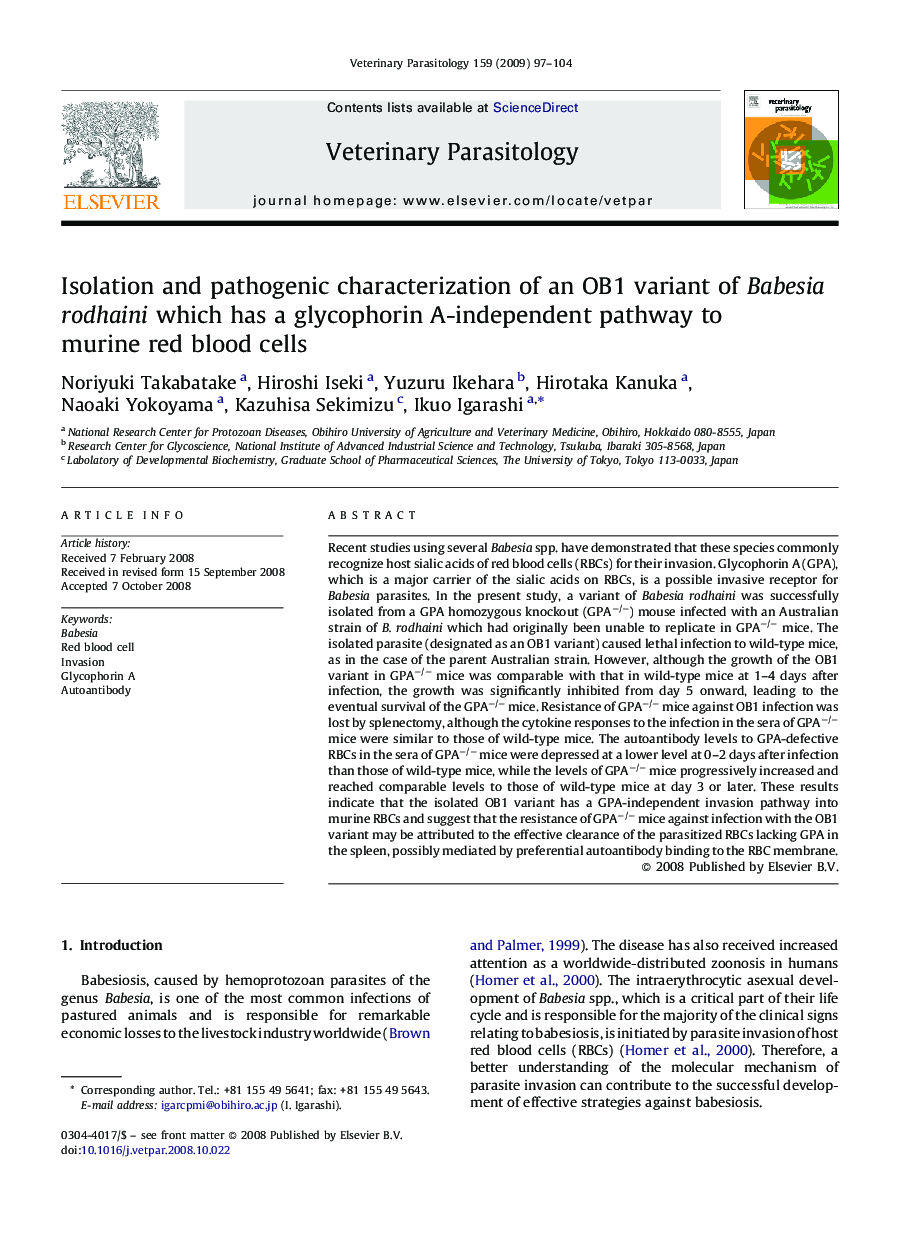| Article ID | Journal | Published Year | Pages | File Type |
|---|---|---|---|---|
| 2471329 | Veterinary Parasitology | 2009 | 8 Pages |
Recent studies using several Babesia spp. have demonstrated that these species commonly recognize host sialic acids of red blood cells (RBCs) for their invasion. Glycophorin A (GPA), which is a major carrier of the sialic acids on RBCs, is a possible invasive receptor for Babesia parasites. In the present study, a variant of Babesia rodhaini was successfully isolated from a GPA homozygous knockout (GPA−/−) mouse infected with an Australian strain of B. rodhaini which had originally been unable to replicate in GPA−/− mice. The isolated parasite (designated as an OB1 variant) caused lethal infection to wild-type mice, as in the case of the parent Australian strain. However, although the growth of the OB1 variant in GPA−/− mice was comparable with that in wild-type mice at 1–4 days after infection, the growth was significantly inhibited from day 5 onward, leading to the eventual survival of the GPA−/− mice. Resistance of GPA−/− mice against OB1 infection was lost by splenectomy, although the cytokine responses to the infection in the sera of GPA−/− mice were similar to those of wild-type mice. The autoantibody levels to GPA-defective RBCs in the sera of GPA−/− mice were depressed at a lower level at 0–2 days after infection than those of wild-type mice, while the levels of GPA−/− mice progressively increased and reached comparable levels to those of wild-type mice at day 3 or later. These results indicate that the isolated OB1 variant has a GPA-independent invasion pathway into murine RBCs and suggest that the resistance of GPA−/− mice against infection with the OB1 variant may be attributed to the effective clearance of the parasitized RBCs lacking GPA in the spleen, possibly mediated by preferential autoantibody binding to the RBC membrane.
